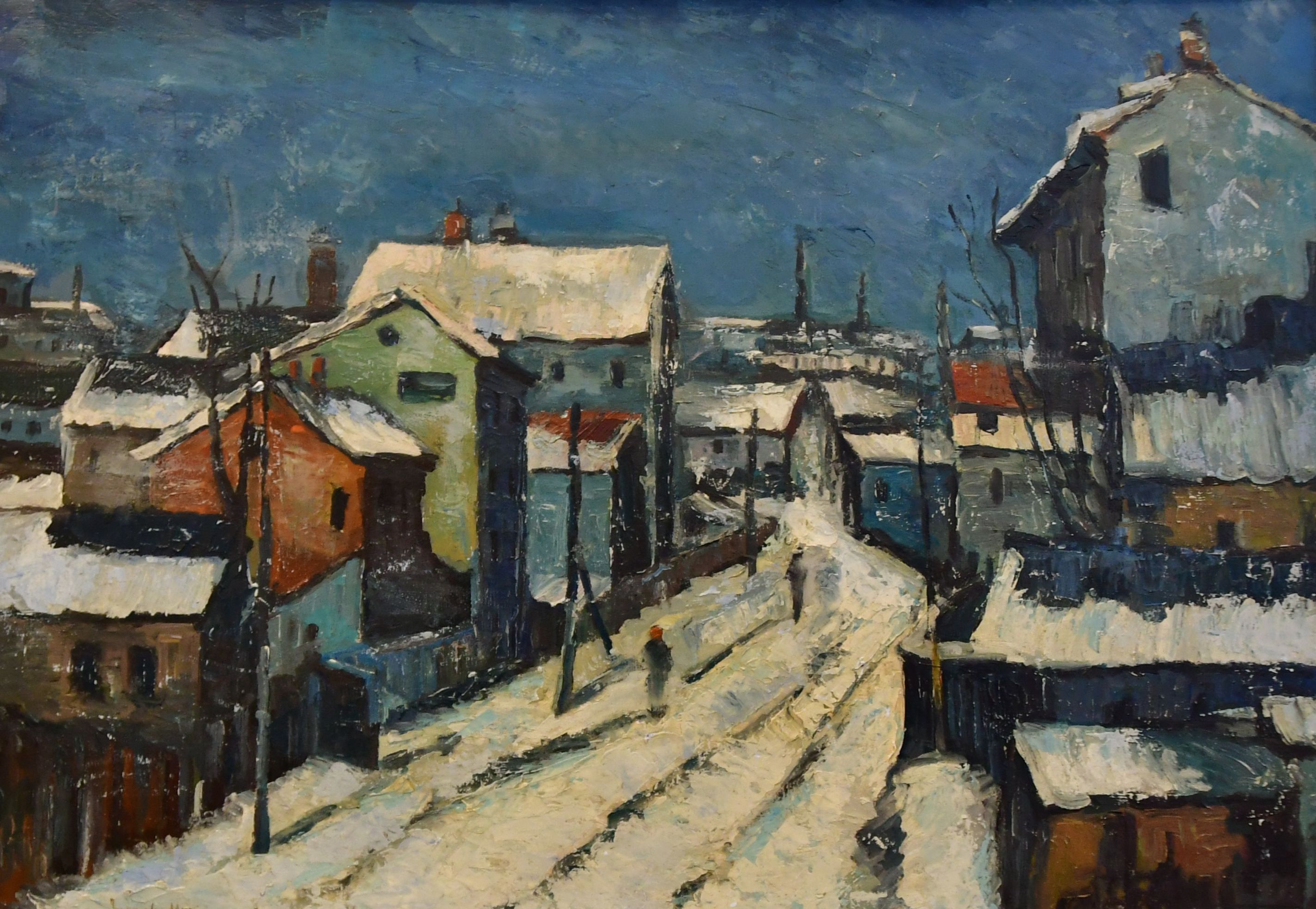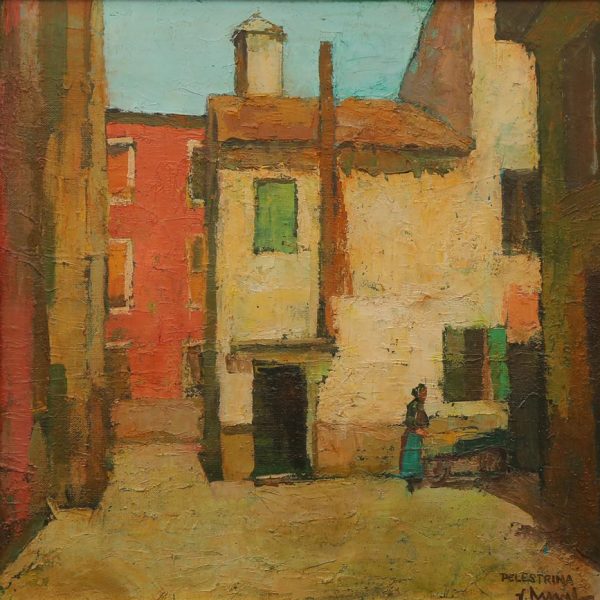


Jean Cheller: “Corner of the slum”
Jean Cheller is one of the artists "erased" by the communist regime from the attention of the public and specialized critics. Descendant of a German family of Austrian origin. Cheller trained at the Art Academy in Bucharest, being one of Gheorghe Petrașcu's favorite students. The apprenticeship in Petrașcu's workshop drew on him some suspicions still hard to fight that he had made fakes after the works of his master, but the fact distorted until it was said that he was imprisoned three times because of this. Throughout his life Jean Cheller it was a discreet presence, with rare participations in the Official Salons of the time, but exhibited works were always appreciated. The artist's situation worsened considerably after the war. Herta Müller explains the disastrous situation in which the German community awoke after the establishment of the communist regime, most being deprived of civil rights and pursued by security, even reaching waves of deportations to Russian labor camps (Siberia). So Jean Cheller's withdrawal from public life, as well as the naturalization of the German name in a close Romanian version, become explicable in the new political context, in which the German minority had reached the center of racial discrimination. Jean Cheller's creation is largely dependent on his master. Gheorghe Petrașcu. Attracted by the outskirts of Bucharest, Cheller created a series of urban landscapes, representing slums. Corner of the slum is a quiet street in interwar Bucharest, made in the manner of structured simplifications, slightly angular, expressionist type, which many artists of the time use to solve essentially realistic compositions. Very clearly drawn verticals of the walls harmonize with the oblique and parallel horizontals of the roofs. The composition is deliberately unbalanced, and the rhythmicity of the straight plane is conjugated by opposition with the obscure aspect of the street and the silhouette that remains almost unnoticed in the foreground.
Cheller trained at the Art Academy in Bucharest, being one of Gheorghe Petrașcu's favorite students. The apprenticeship in Petrașcu's workshop drew on him some suspicions still hard to fight that he had made fakes after the works of his master, but the fact distorted until it was said that he was imprisoned three times because of this. Throughout his life Jean Cheller it was a discreet presence, with rare participations in the Official Salons of the time, but exhibited works were always appreciated. The artist's situation worsened considerably after the war. Herta Müller explains the disastrous situation in which the German community awoke after the establishment of the communist regime, most being deprived of civil rights and pursued by security, even reaching waves of deportations to Russian labor camps (Siberia). So Jean Cheller's withdrawal from public life, as well as the naturalization of the German name in a close Romanian version, become explicable in the new political context, in which the German minority had reached the center of racial discrimination. Jean Cheller's creation is largely dependent on his master. Gheorghe Petrașcu. Attracted by the outskirts of Bucharest, Cheller created a series of urban landscapes, representing slums. Corner of the slum is a quiet street in interwar Bucharest, made in the manner of structured simplifications, slightly angular, expressionist type, which many artists of the time use to solve essentially realistic compositions. Very clearly drawn verticals of the walls harmonize with the oblique and parallel horizontals of the roofs. The composition is deliberately unbalanced, and the rhythmicity of the straight plane is conjugated by opposition with the obscure aspect of the street and the silhouette that remains almost unnoticed in the foreground.
Bibliography:
OCTAVIAN, Tudor, “Forgotten Romanian Painters”, Noi Media Print 2003.







